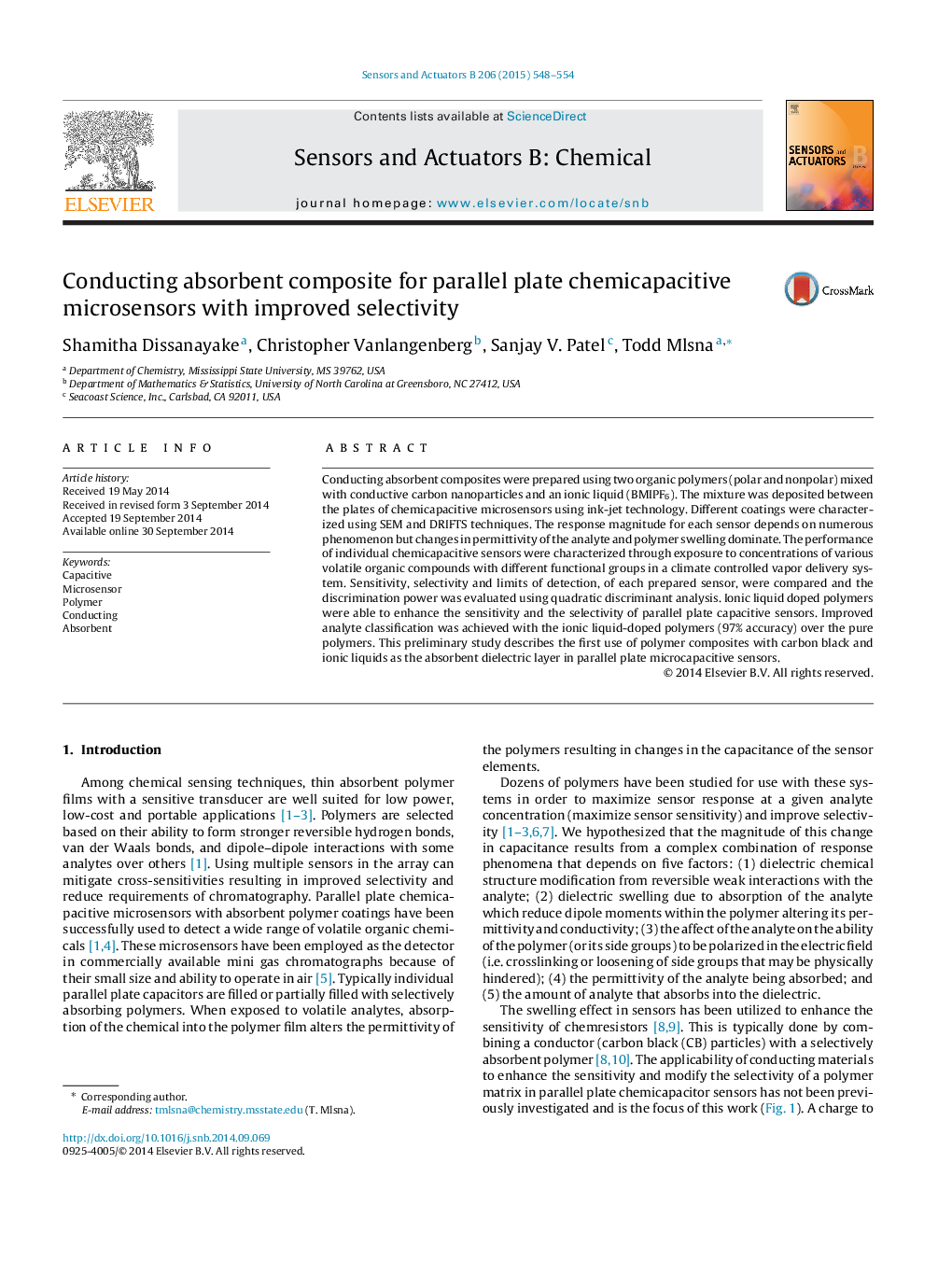| Article ID | Journal | Published Year | Pages | File Type |
|---|---|---|---|---|
| 744400 | Sensors and Actuators B: Chemical | 2015 | 7 Pages |
•Conducting (carbon black (CB) nanoparticles and ionic liquid) absorbent composites were prepared.•Organic polymer/conducting composites were used with chemicapacitive microsensors.•Greater response with ionic liquid (BMIPF6) but higher noise leads to poor LOD.•Improved sensitivity with CB doped polar polymers for volatile biomarkers.•Improved selectivity with ionic liquid doped polymers for volatile biomarkers.
Conducting absorbent composites were prepared using two organic polymers (polar and nonpolar) mixed with conductive carbon nanoparticles and an ionic liquid (BMIPF6). The mixture was deposited between the plates of chemicapacitive microsensors using ink-jet technology. Different coatings were characterized using SEM and DRIFTS techniques. The response magnitude for each sensor depends on numerous phenomenon but changes in permittivity of the analyte and polymer swelling dominate. The performance of individual chemicapacitive sensors were characterized through exposure to concentrations of various volatile organic compounds with different functional groups in a climate controlled vapor delivery system. Sensitivity, selectivity and limits of detection, of each prepared sensor, were compared and the discrimination power was evaluated using quadratic discriminant analysis. Ionic liquid doped polymers were able to enhance the sensitivity and the selectivity of parallel plate capacitive sensors. Improved analyte classification was achieved with the ionic liquid-doped polymers (97% accuracy) over the pure polymers. This preliminary study describes the first use of polymer composites with carbon black and ionic liquids as the absorbent dielectric layer in parallel plate microcapacitive sensors.
